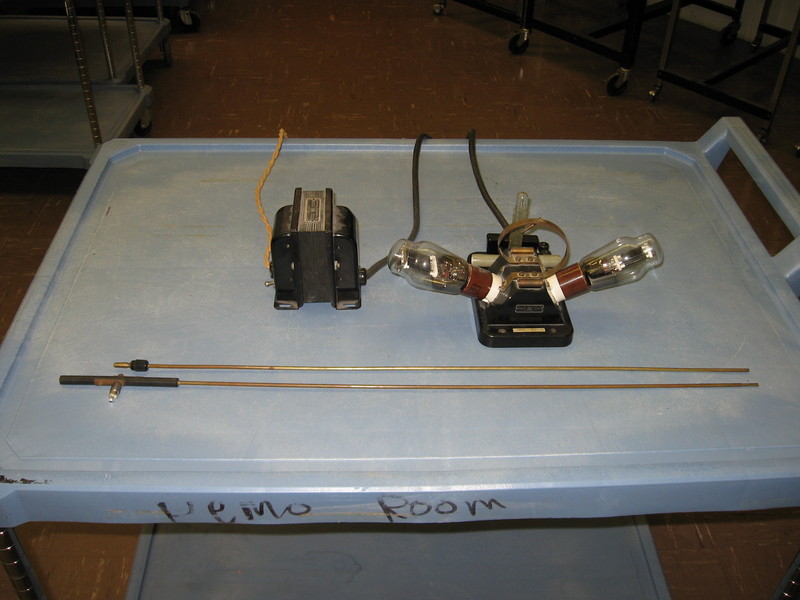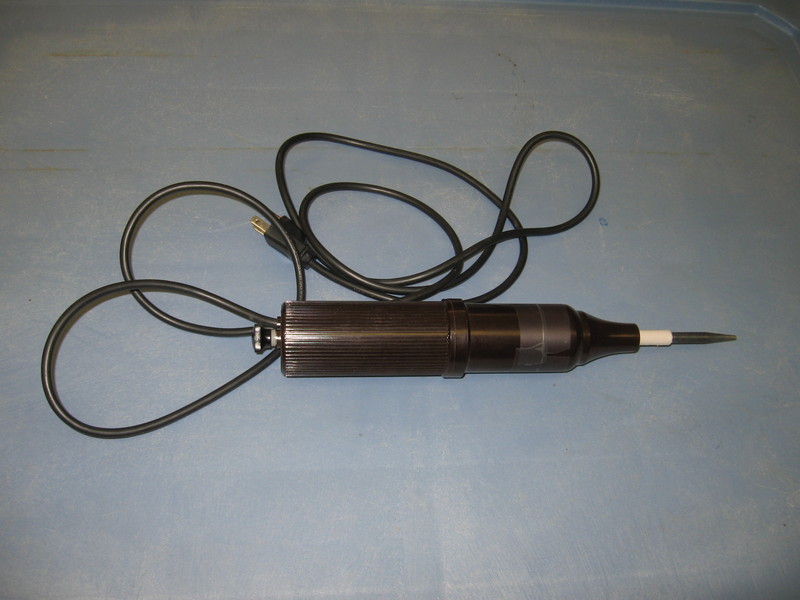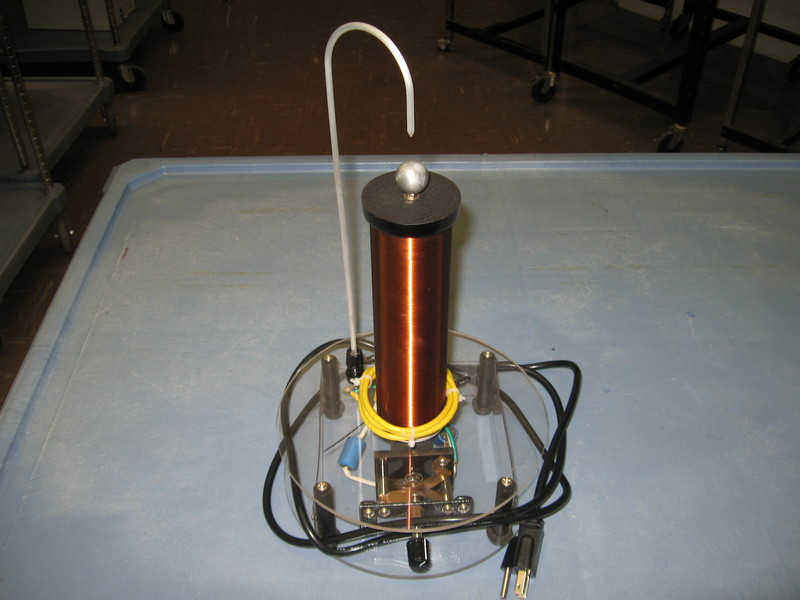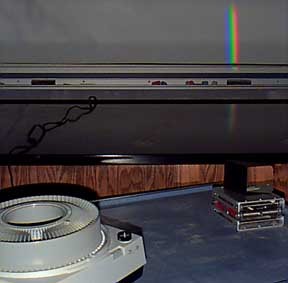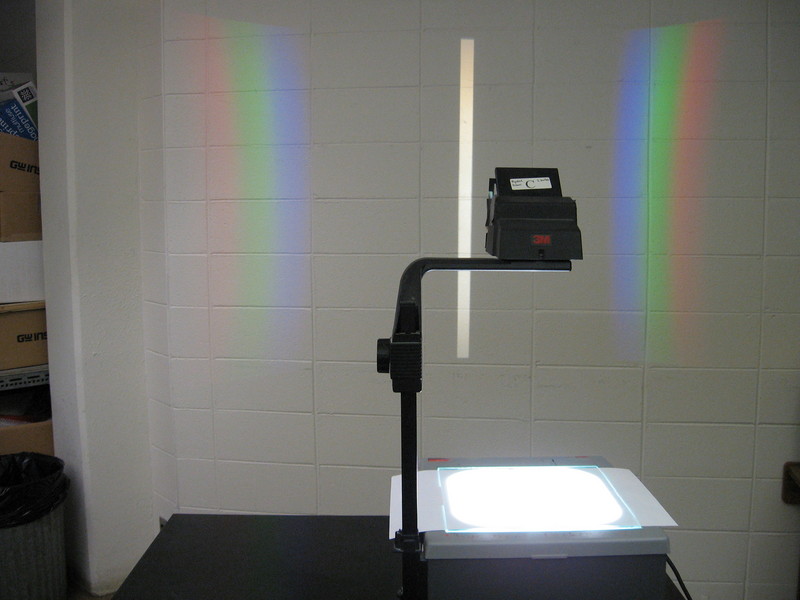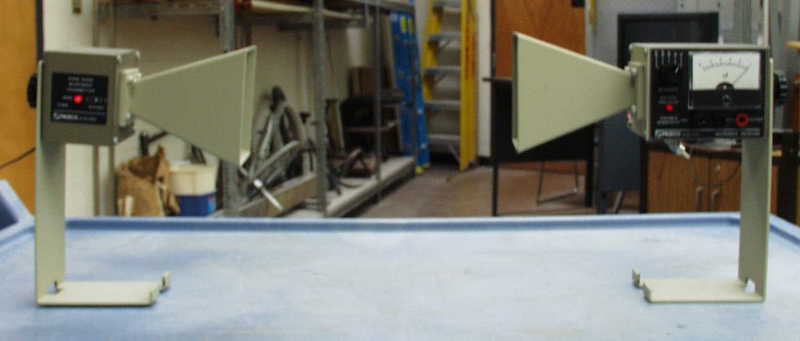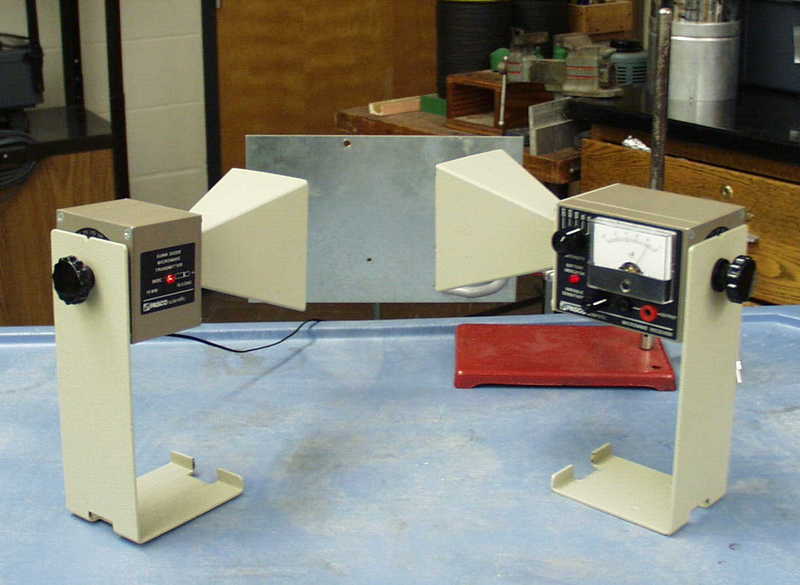E&M RADIATION
5N10.60 RADIO TRANSMITTER5N20.10 INDUCTION COIL
5N20.25 TESLA COIL
5N30.10 PROJECT THE SPECTRUM #1
5N30.11 PROJECT THE SPECTRUM#2
5N30.30 MICROWAVE ABSORPTION
5N30.31 MICROWAVE REFLECTION
|
5N10.60 Radio Transmitter The output of the transmitter is strong enough to light up a flashlight bulb in the middle of a metal rod if the rod is at the right distance (peak of sine wave) and orientation (polarization). Setup Requirements: Minimal. Test bulbs in stock room before doing in class. Connect two parts of antenna together and tape. Equations: None Safety Issue: High voltage present. If tubes are broken or burn out they cannot be replaced.Position away from other electronic devices and turn off cell phone. If you have electronic implants do not do this experiment. If you use the wireless microphone turn it off. |
|
5N20.10 Induction Coil (Oudin Coil) The small handheld induction coil changes line voltage to thousands of volts.
Equations: V(out) = V(in) x turns ratio Safety Issues: High potential shock hazard. Do not "zap" anything containing semiconductors. |
|
5N20.25 Tesla Coil Light a fluorescent lamp by bringing near a Tesla coil. Setup Requirements: Some adjustment may be needed. Equations: None Safety Issues: High potential shock hazard. Do Not Touch Electrodes. |
|
5N30.10 Project a Spectrum #1 Project white light through a high dispersion prism to produce "rainbow" pattern using slide projector as light source.
Setup Requirements: A metal "slide" with slit is placed in projector. Place large prism in front of projector and adjust orientation of prism until see spectrum. Equations: None Safety Issues: Allow projector to cool off before turning off completely. |
|
5N30.11 Project A Spectrum #2 Instead of using projector as light source to produce spectrum with prism use the overhead projector and large diffraction grating. Cover most of the plate with paper leaving a narrow slit. Place the grating in front of the mirror that reflects light to screen. Orient grating so colorful pattern on each side of slit image. Tape grating in place. Adjust slit width to change brightness. Setup Requirements: Minimal Equations: Relation between grating spacing, angle and wavelength Safety Issues: None |
|
5N30.30 MIcrowaves (Absorption) Demonstrate absorption of microwaves. Place various materials ( metal, plastic, water,etc) between transmitter and receiver and observe change in intensity.
Setup Requirements: Assembled as needed. Ask ahead of time. Equipment is borrowed from Introductory Physics stockroom. Battery may need to be replaced. Equations: None Safety Issues: Pacemakers and other electronic medical devices may be affected by 10.525 GHz microwaves. Check with a doctor before operating if you have pacemaker or other electronic medical devices. |
|
5N30.31 MIcrowaves (Reflection) Demonstrate reflection of microwaves. Try different materials (metal vs rubber for example).
Setup Requirements: Assembled as needed. Ask ahead of time. The equipment is borrowed from Introductory Physics stockroom. Set up reflector and adjust transmitter and receiver so reflected wave is detected. Batteries may need to be replaced. Equations: None Safety Issues: Pacemakers and other electronic medical devices may be affected by 10.525 GHz microwaves. Check with a doctor before operating if you have pacemaker or other electronic medical devices. |

